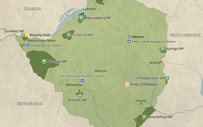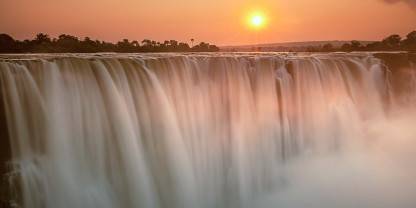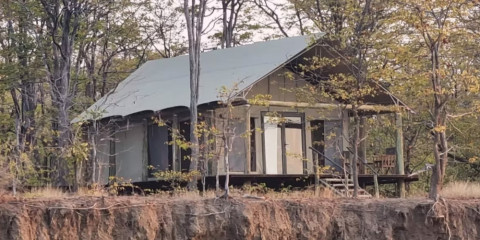Zimbabwe is a superb safari destination. The main parks are well tended, and plentiful wildlife includes the second-highest elephant count of any African country. Standing in the spray of Victoria Falls, the world’s largest sheet of falling water, is an overwhelming experience. Hwange National Park, home to all the Big Five, is not be missed, while Mana Pools National Park offers great on the Zambezi River. Despite years of misrule, Zimbabwe also remains a friendly and well-organized place to visit.

-
Rates (USD)
- $110 to $737 pp/day
-
Best Time To Go
- June or July to October (Most parks)
-
High Season
- July to October (Only Victoria Falls gets busy)
-
Size
- 390,757km² / 150,872mi²


Pros & Cons
- Excellent guiding
- One of the best destinations
- A chance to see Victoria Falls
- Relatively low tourist densities
- Some of Africa’s densest elephant populations
- English spoken widely and to a very high standard
- The opportunity to explore the ruined medieval stone city of Great Zimbabwe
- A landlocked country, so no beach holiday options
- Some potential for political instability
Wildlife
Hwange and Mana Pools are Zimbabwe’s most popular wildlife-viewing destinations. Less well known but equally worthwhile are the remote Matusadona and Gonarezhou National Parks. Most parks support large numbers of elephant, buffalo, hippo, zebra, warthog and various antelope. Lion and spotted hyena are also quite easily seen, especially in Hwange, but while leopard, cheetah and African wild dog are widespread, sightings can prove rare. Rhinos are generally rare but can be tracked on foot in Matobo National Park.
More about the wildlife
Activities
Zimbabwe is a great country for safaris. can be undertaken in Hwange and other national parks, but most private lodges also offer thrilling guided , particularly in Mana Pools, Gonarezhou and Matusadona. Other popular activities include viewing the spectacular Victoria Falls on foot or from the air, bungee jumping and white-water rafting close to the Falls, and exploring the magnificent ruined stone city of Great Zimbabwe.
Weather & Climate
Zimbabwe’s temperate climate is characterized by a Dry season (April to October) and a Wet season (November to March). The drier months are cool to warm, although the temperature shoots up before the rains. In the wetter months, the temperature climbs to an afternoon average of around 30°C/86°F with high levels of humidity.
More about the weather and climate
Best Time to Visit
Although the Wet season (November to March) is a beautiful time of year, wildlife viewing is generally best in the Dry season (April to October), especially from June onward. Victoria Falls is worth visiting at any time, but the drama peaks over February to June, when the water flow is highest. It is still very spectacular over July to September, when there’s less spray and views are clearer.
More about the best time to visit
Premier Parks & Reserves
- Hwange NP – Classic safaris
- Mana Pools NP – Walking, canoe and classic safaris
- Gonarezhou NP – Classic and walking safaris
- Matusadona NP – Walking, boat and classic safaris
- All 8 Zimbabwe Parks & Reserves




